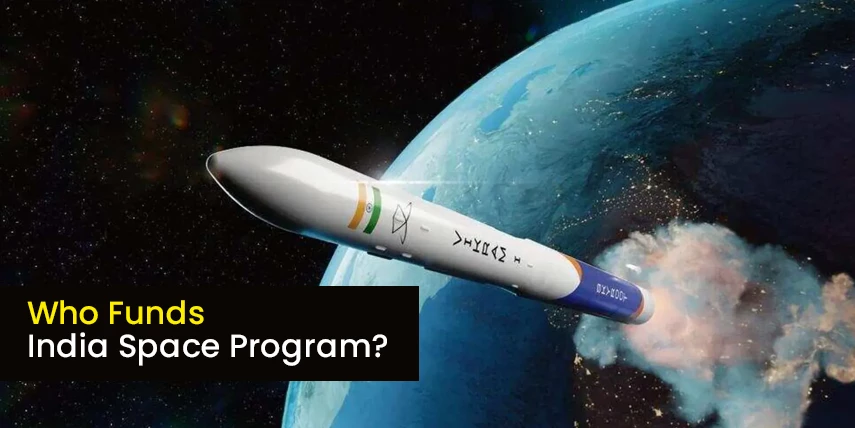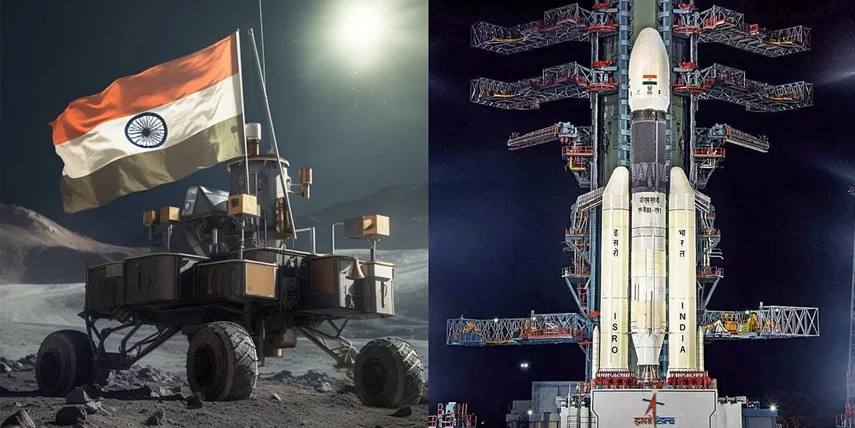

Sep 07, 2023
303
We are all familiar with the popular moon landing in India, currently. After a lot of errors and trials, the country managed to attain success, in their goal, following in the footsteps of the USA and Russia. But unlike the USA, India doesn't have a stable or strong economy. So one may wonder, who funds Indian space program? Is it really the country itself, or does it have assistance from other powerful countries? With that said, in today’s blog, we look closely, who takes care of the hefty expenses of the Indian space programs, and what else is in store for India’s space news.
Who funds Indian space program?

The Department of Space (DoS) of the Indian government provides funding for the Indian Space Program. The DoS, a cabinet-level division, is in charge of the overall growth and administration of India's space program. The Department of State has set aside Rs. 11,300 crore ($1.6 billion) for the fiscal year 2023–2024. The Indian Space Program also receives some private funding in addition to government funding. India's interest in space startups has grown recently, and some of these businesses have received funding from venture capitalists. Significant advancements have been made recently by the Indian space program. India successfully launched Chandrayaan-2, its first lunar mission, in 2022. India became the fourth nation after the mission succeeded in soft-landing a rover on the moon. In the upcoming years, India also intends to begin its own human spaceflight program, while encourage space tourism. An important factor in India's economic development and growth is the country's space program. The program has improved India's technological prowess while also generating jobs and stimulating the manufacturing industry. In India's efforts to combat climate change and other issues, the program is also essential.
India Landing on the Moon

India made history on August 23, 2023, when its Chandrayaan-3 lander successfully touched down on the surface of the moon. Following the Chandrayaan-2 mission, which failed to land due to a technical issue, this was India's second attempt at landing on the moon. On July 14, 2023, the newest mission was launched from the Satish Dhawan Space Center in Sriharikota, India. Pragyan, a rover that was attached to the lander and released after it landed on the moon, was also present.The new mission was created to investigate the moon's south pole, which is thought to be abundant in water ice. Cameras, spectrometers, and a drill were among the many tools the lander and rover had to study the lunar surface. It was a significant achievement for India's space program. India joined the US, the Soviet Union, and China as the fourth nation to successfully land a spacecraft on the moon. The mission also showed off India's expanding space exploration capabilities. It is anticipated that the expedition will run for about two weeks. The lander and rover will then be put into low-power mode. In order to continue their moon exploration, the mission team hopes to be able to wake up the lander and rover in the future.
Will Pakistan be Able to Land on the Moon Soon?
As India's space business, takes off, the question arises about Pakistan’s capability to land on the moon someday. There is a chance that Pakistan will be able to set foot on the moon at some point, though it is unclear when. There is a space program in Pakistan, but it is not as developed or as well-funded as the one in India. Pakistan Lunar Exploration Mission (PLEM), the country's first lunar mission, was launched in 2019. The spacecraft was unable to reach the moon, making the mission a failure. Pakistan has asserted its commitment to space exploration and its intention to keep up its lunar program, though. Pakistan announced in 2022 that it would launch the Pakistan Lunar Orbiter and Exploration Mission (POEM), a new lunar mission. The mission is slated to launch in 2025, and it will likely spend a year orbiting the moon.The success of the POEM mission may open the door for a future Pakistani moon landing. It is crucial to keep in mind that space exploration is a challenging and pricey endeavor, and it is uncertain whether Pakistan will ever be able to finance a moon landing mission.
Here are some of the challenges that Pakistan will need to overcome in order to land on the moon:
Funding: Pakistan will need to figure out a way to raise the money required for a moon landing mission because space exploration is a very expensive endeavor.
Technology: In order to land a spacecraft on the moon, Pakistan will need to develop the required technology. This entails creating a launch vehicle powerful enough to reach the moon and a spacecraft resilient enough to withstand the harsh conditions of space.
Knowledge: Pakistan will need to acquire the knowledge necessary to organize and carry out a moon landing mission. This includes educating scientists and engineers in the area of space exploration.
Pakistan is dedicated to space exploration despite the difficulties, and it is possible that someday it will be able to set foot on the moon. However, it is critical to maintain a realistic perspective on the completion date. Before Pakistan can afford and carry out a successful moon landing mission, it may be many years.
